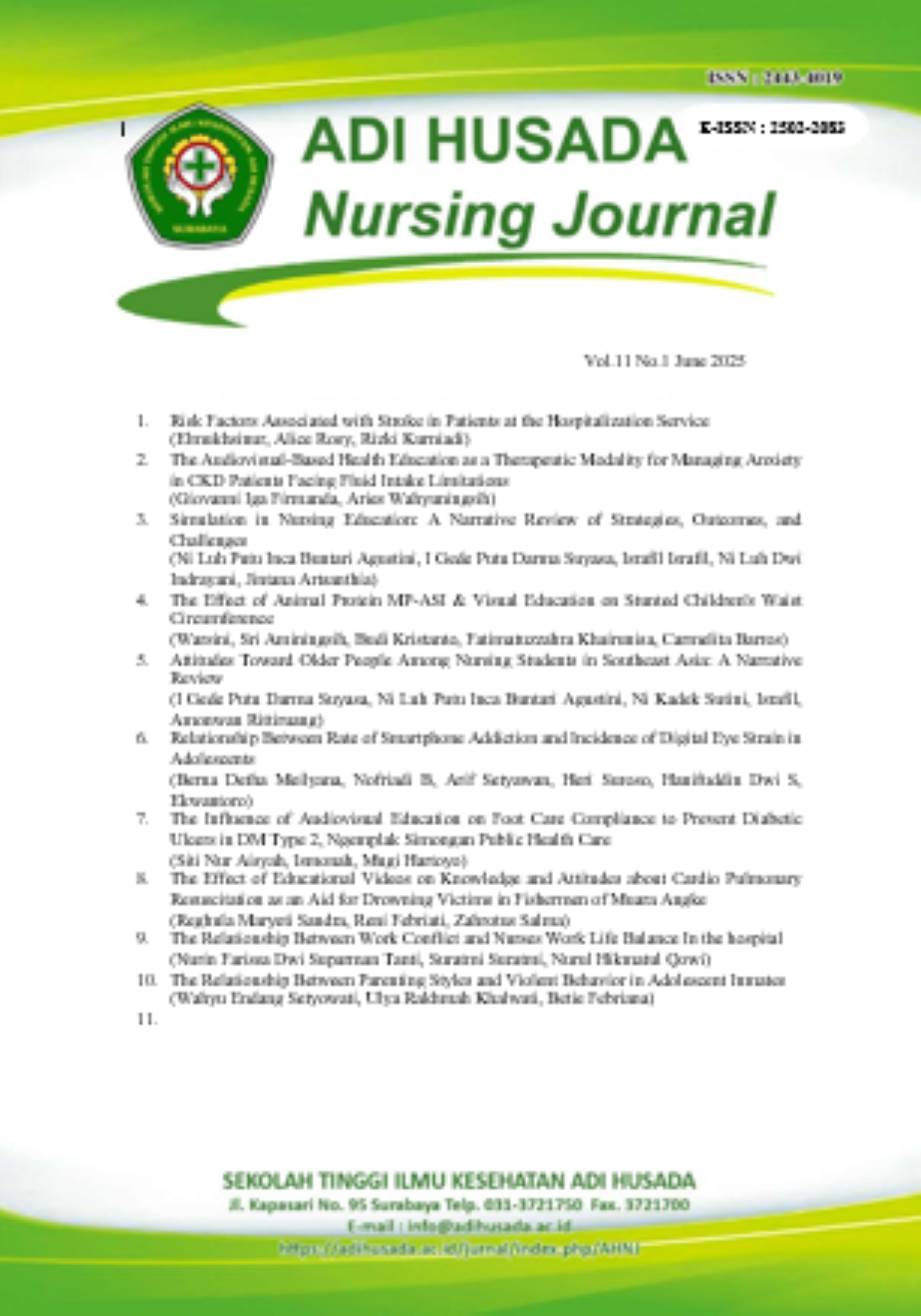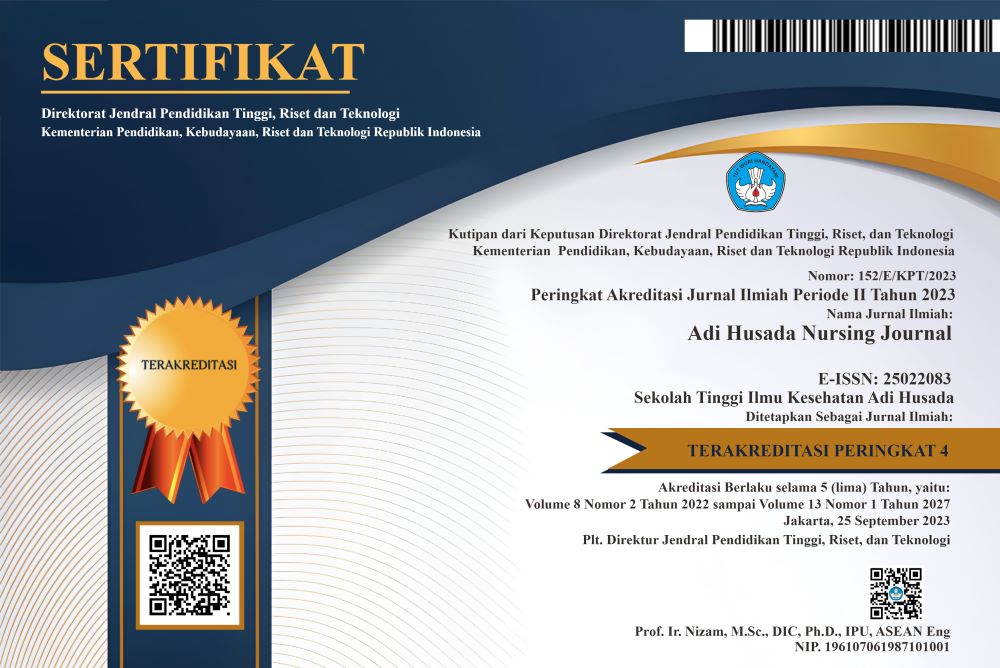The Impact of Technology-Based Games on The Fine Motor Development of Special Needs Children
Abstract
The development of fine motor skills in children is a crucial ability that can be nurtured. The development of fine motor skills is frequently delayed in children with exceptional disabilities. Technology-based games, available in a variety of specialized smartphone applications, are one way to gradually and entertainingly improve children's fine motor skills. The purpose of this study is to assess the effectiveness technology-based games in helping children with special needs develop their fine motor skills. The research design uses a quasi-experimental method with a one-group pre-post test approach. A total of 28 children with special needs were the subjects of the study. Data were collected through observation using the Bender Visual Motor Gestalt Test instrument and analyzed using the Wilcoxon statistical test. The research results show that after engaging in technology-based games, the percentage of those surveyed with high fine motor abilities rose from 21.4% to 57.1% after playing technology-based games. Statistical test analysis showed a significant improvement in the fine motor skills of children with special needs after being given technology-based games, with a p-value of 0.000 and α < 0.05. The results of this study provide evidence of the influence of technology-based games on fine motor skills in special needs children. The implications of the research on technology-based games can be an effective alternative for developing fine motor skills in special needs children.
References
Jauhari, M. N., Irvan, M., & Sunarya, P. B. (2020). Vocational Education Services in Schools for Children with Special Needs. https://doi.org/10.2991/ASSEHR.K.201214.315
Key Issues for Children with Disabilities in Indonesia (February 2023). www.unicef.org/indonesia/reports/key-is-
Lelong, M., Zysset, A., Nievergelt, M., Luder, R., Götz, U., Schulze, C., & Wieber, F. (2021). How effective is fine motor training in children with ADHD? A scoping review. BMC Pediatrics, 21(1). https://doi.org/10.1186/S12887-021-02916-5,
Liputan 6, com. (2023, March). Jumlah Anak Berkebutuhan Khusus Terus Bertambah tapi Hanya 12 Persen yang Sekolah Formal - Disabilitas Liputan6.com. https://www.liputan6.com/disabilitas/read/5233102/jumlah-anak-berkebutuhan-khusus-terus-bertambah-tapi-hanya-12-persen-yang-sekolah-formal?utm_source=chatgpt.com
Lutfio, M. I., Kapitang, F., Wijaya, M. I., Azizah, Y. L., & Husna, D. (2023). Penggunaan Teknologi Sebagai Media Pembelajaran Pada Anak Berkebutuhan Khusus. Jurnal Pendidikan, 32(1), 121–128. https://doi.org/10.32585/JP.V32I1.3489
McGlashan, H. L., Blanchard, C. C. V., Nicole, J. S., Lee, R., French, B., & Sycamore, N. J. (2017). Improvement in children’s fine motor skills following a computerized typing intervention. Human Movement Science, 56, 29–36. https://doi.org/10.1016/J.HUMOV.2017.10.013
Mia, M. R., Ahamed, S. I., Fial, A., & Nemanich, S. (2024). A Scoping Review on Mobile Health Technology for Assessment and Intervention of Upper Limb Motor Function in Children with Motor Impairments. Games for Health Journal, 13(3), 135–148. https://doi.org/10.1089/G4H.2023.0224;WGroup:String:Publication
Nazari, et al. (2015, March). Comparing the visual – motor perception of normal children and children with learning disabilities using Bender Geshtalt Test. https://www.researchgate.net/publication/273132597_Comparing_the_visual_-_motor_perception_of_normal_children_and_children_with_learning_disabilities_using_Bender_Geshtalt_Test
opendata.surabaya.go.id. (2025, January). Detail Resource | Open Data. https://opendata.surabaya.go.id/open_validation/detail-resource/jumlah-sekolah-dan-siswa-inklusi-per-kecamatan-2025/fca43ad8-8d5b-41c3-beb4-2c3eb285221f
Rukmini, R., Septiana Zahro, W., Isnaini, H., Salsabila Anggreani, R., Qhomariyah, I., STIKes Adi Husada, K., Timur, J., Author, C., & Rukmini Rukmini, A. (2022). Hydrotherapy terhadap Spastik Otot Anak Cerebral Palsy di Sekolah Luar Biasa. Adi HUsada Nursing Journals, 8(1), 61–68. https://doi.org/10.37036/ahnj
Safitri, L., Islam, P., Usia, A., Universitas, D., & Karawang, S. (2022). Perkembangan Kemampuan Motorik Halus Anak Usia Dini 5-6 Tahun melalui Kegiatan Memegang Pensil. Indonesian Journal of Early Childhood: Jurnal Dunia Anak Usia Dini, 4(2), 492–502. https://doi.org/10.35473/IJEC.V4I2.1441
Saha, S., Basu, S., Majumder, K., & Chakravarty, D. (2023). Motion sensor-based android game to improve fine motor and working memory skills of children. Springer, 404, 263–275. https://doi.org/10.1007/978-981-19-0105-8_26
Suhada, I. (2016). Psikologi Perkembangan Anak Usia Dini (Raudatul Athfal) (1st ed.). PT Remaja Rosdakarya. https://library.inais.ac.id/opac/detail-opac?id=511
Tryandoko, A., Luar Biasa, P., & Widajati, W. (2025). The Intervensi Motorik Halus Melalui Metode Doodling Bermedia Stylus Pen Bagi Anak TUNAGRAHITA. Jurnal Pendidikan Khusus, 20(02). https://ejournal.unesa.ac.id/index.php/jurnal-pendidikan-khusus/article/view/66690
Vilela, J. F., Basso, L., Magalhães, D. S. F., & Frade-Barros, A. F. (2022). Motor Performance Improvement in a Technological Age: A Literature Review. IFMBE Proceedings, 83, 401–404. https://doi.org/10.1007/978-3-030-70601-2_62
Zhang, J., Zhao, Y. J., Wang, J. Y., Cui, H., Li, S., Meng, X., Cai, R. Y., Xie, J., Sun, S. Y., Yao, Y., & Li, J. (2024). Comprehensive assessment of fine motor movement and cognitive function among older adults in China: a cross-sectional study. BMC Geriatrics, 24(1), 1–10. https://doi.org/10.1186/S12877-024-04725-8/FIGURES/3.
Keywords
Fine Motor, Games, Special Needs Children

This work is licensed under a Creative Commons Attribution 4.0 International License.








